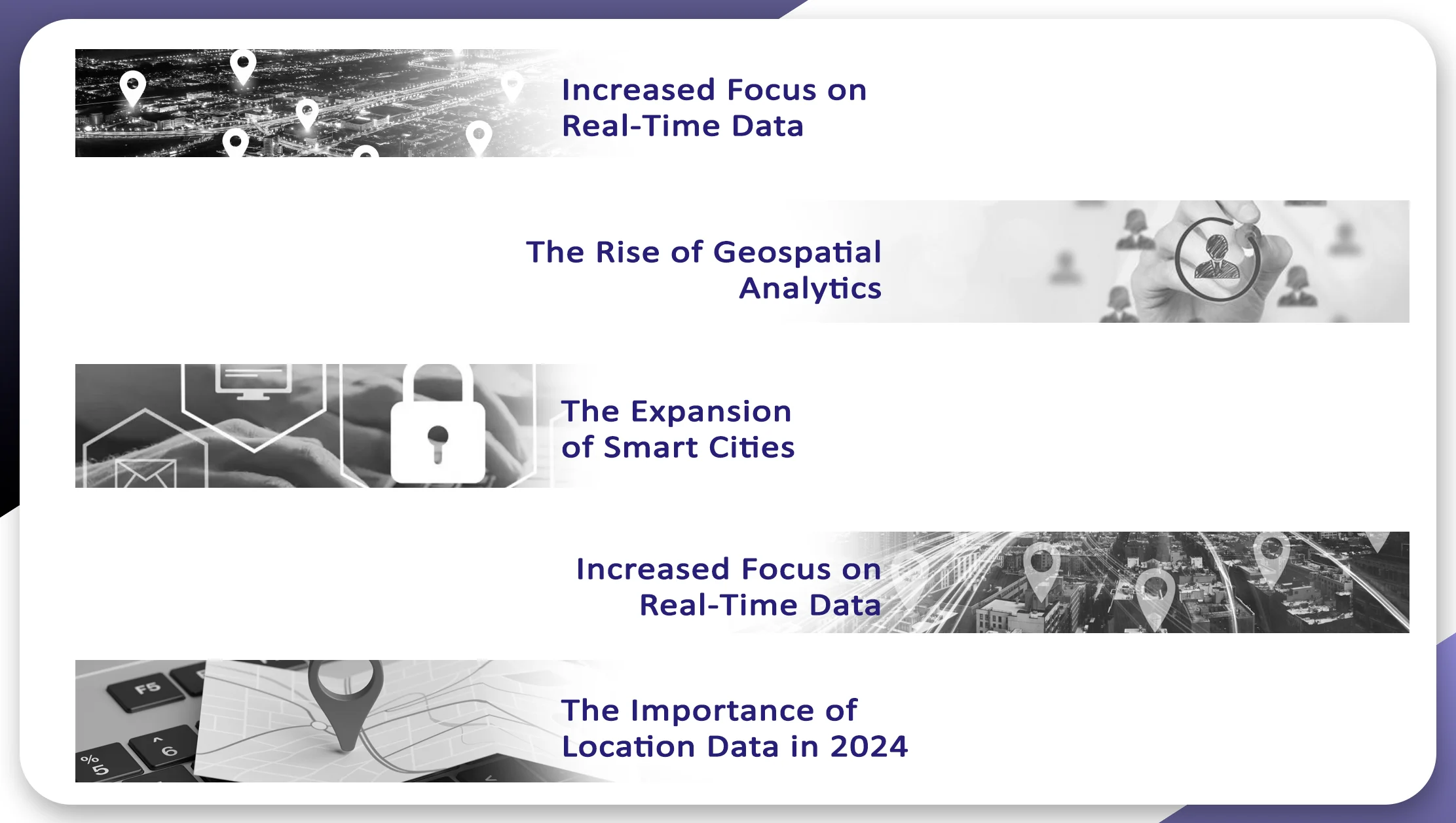.webp)

Introduction
In an era where data-driven decision-making is a cornerstone of business success, the power of location intelligence has become increasingly essential. With the advent of advanced technologies, companies can now harness the vast amounts of location data available online to gain actionable insights that drive business growth. One of the most effective methods for acquiring this data is through location intelligence web scraping, which allows businesses to scrape data from store locations and extract data from store locations. As we look toward 2024, the importance of this practice will only continue to grow, enabling businesses to future-proof their strategies in an ever-evolving marketplace.
What is Location Intelligence Web Scraping?

Location intelligence web scraping is the process of automatically collecting and analyzing location-specific data from online sources. This method enables businesses to gather valuable geographic information that can be used for various purposes, such as market analysis, site selection, competitive research, and customer behavior tracking. By employing web scraping techniques, companies can efficiently perform location data extraction from websites, social media platforms, and other online resources.
The extracted data for location intelligence includes information like store addresses, customer reviews, foot traffic patterns, and even real-time data about local events or trends. This data is then processed and analyzed to provide actionable insights that help businesses make informed decisions. For example, a retailer might use location intelligence web scraping to extract data for location analysis, identifying the most popular shopping areas in a city or understanding the proximity of competitors' stores. This process, known as location data extraction, is vital for compiling store location datasets that can be used to enhance marketing strategies, optimize supply chains, and improve customer experience.
As the demand for real-time and accurate location data continues to grow, location intelligence web scraping has become a crucial tool for businesses aiming to stay competitive. This approach not only saves time and resources but also ensures that companies have access to the most relevant and up-to-date information for their strategic planning. By leveraging store location datasets, businesses can better understand market dynamics, anticipate consumer needs, and make data-driven decisions that propel growth in a rapidly changing landscape.
The Importance of Location Data in 2024

As we move into 2024, the significance of location data continues to grow, becoming an integral part of business strategies across various industries. Location data, which encompasses geographical information such as store addresses, customer movement patterns, and local event trends, provides businesses with the insights needed to make informed decisions. The process of location data extraction is crucial for obtaining this information, enabling companies to harness data that is otherwise scattered across numerous online sources.
Extracting data for location allows businesses to compile comprehensive store location datasets, which can be used to enhance a wide range of operations. For instance, retailers can use these datasets to determine the best locations for new stores, optimize delivery routes, or understand the impact of local competition. Real estate companies can analyze foot traffic patterns and demographic data to identify prime investment opportunities, while marketers can tailor campaigns based on the specific needs and behaviors of local customer bases.
In 2024, the ability to rapidly and accurately extract location data will be a key differentiator for businesses looking to stay ahead of the curve. With the rise of smart cities, IoT devices, and real-time data analytics, the demand for precise and actionable location insights has never been higher. Businesses that leverage location data extraction effectively will be able to optimize their operations, enhance customer experiences, and ultimately, drive growth.
Furthermore, as more companies recognize the value of store location datasets, the competitive landscape will become increasingly data-driven. Companies that fail to adapt to this trend risk being left behind. Therefore, investing in tools and technologies that facilitate the efficient extraction and analysis of location data will be essential for businesses seeking to maintain a competitive edge in the dynamic market of 2024.
Key Trends Driving Location Intelligence Web Scraping in 2024

Several trends are expected to shape the landscape of location intelligence web scraping in 2024. Understanding these trends will help businesses stay ahead of the curve and make the most of their data extraction efforts.
Increased Focus on Real-Time Data
Real-time data will be a game-changer for businesses in 2024. As consumers' behavior and preferences evolve rapidly, having access to up-to-date location data will allow businesses to respond quickly to changes in the market. Web scraping tools that can extract location data in real-time will be invaluable for businesses looking to maintain agility and relevance.
The Rise of Geospatial Analytics
Geospatial analytics, which involves analyzing data with a geographic component, will become more prominent in 2024. Businesses will increasingly rely on location intelligence web scraping to collect geospatial data from various sources, enabling them to conduct sophisticated analyses of customer behavior, market trends, and competitor activities.
Growing Demand for Personalized Experiences
Consumers are increasingly expecting personalized experiences from the brands they interact with. Location data will be crucial for delivering these experiences, allowing businesses to tailor their offerings based on the geographic preferences and behaviors of their customers. Web scraping will enable companies to gather the necessary data to create hyper-localized marketing campaigns and personalized customer journeys.
The Expansion of Smart Cities
Smart cities are on the rise, with urban areas around the world leveraging technology to improve the quality of life for their residents. Location intelligence will be at the heart of smart city initiatives, and web scraping will be a key tool for collecting the vast amounts of data generated by connected devices, sensors, and other smart infrastructure.
Regulatory Considerations and Data Privacy
As the importance of location data grows, so too will the scrutiny around data privacy and regulatory compliance. Businesses will need to be mindful of the legal and ethical implications of location intelligence web scraping, ensuring that their data collection practices comply with local and international regulations.
Use Cases for Location Intelligence Web Scraping

Location intelligence web scraping has a wide range of applications across various industries. Here are some of the most compelling use cases:
1. Retail Site Selection
One of the most critical decisions for retail businesses is choosing the right location for their stores. By scraping data from store locations, businesses can analyze factors such as foot traffic, proximity to competitors, and demographic trends to make informed site selection decisions. For example, a retailer looking to expand into a new city could use web scraping to gather data on the most frequented shopping districts, average customer spend in different areas, and competitor store locations.
2. Competitive Analysis
Understanding the competitive landscape is essential for any business looking to gain an edge in the market. Location intelligence web scraping allows businesses to extract data on competitor locations, store openings and closures, and promotional activities. This information can be used to identify opportunities for market entry, assess the saturation of a particular area, and develop strategies to outperform competitors.
3. Customer Behavior Analysis
Location data is a powerful tool for understanding customer behavior. By extracting data for location from social media platforms, review sites, and mobile apps, businesses can gain insights into where their customers are spending their time, what they are saying about different locations, and how they are interacting with physical stores. This information can be used to optimize store layouts, improve customer experiences, and tailor marketing efforts to specific geographic areas.
4. Supply Chain Optimization
Supply chain efficiency is critical for businesses, particularly those with physical stores or distribution centers. Location intelligence web scraping can be used to collect data on traffic patterns, transportation networks, and warehouse locations, enabling businesses to optimize their supply chains. For example, a company could use web scraping to gather data on delivery times, identify bottlenecks in the supply chain, and adjust their logistics strategies accordingly.
5. Real Estate Investment
Investors in the real estate industry can benefit greatly from location intelligence web scraping. By extracting data from store locations, property listings, and local economic indicators, investors can identify areas with high growth potential, assess property values, and make informed investment decisions. For instance, an investor looking to purchase commercial properties could use web scraping to analyze foot traffic data, average rent prices, and proximity to key amenities.
6. Smart City Planning
As smart cities continue to develop, location intelligence web scraping will play a crucial role in urban planning. City planners can use web scraping to collect data on traffic flow, public transportation usage, and the distribution of services such as healthcare and education. This information can be used to design more efficient and livable urban environments, allocate resources more effectively, and improve the overall quality of life for residents.
The Future of Location Intelligence Web Scraping

The future of location intelligence web scraping looks promising, with several advancements on the horizon that will further enhance its capabilities.
1. Artificial Intelligence and Machine Learning Integration
Artificial intelligence (AI) and machine learning (ML) will play a significant role in the evolution of location intelligence web scraping. These technologies will enable more sophisticated data extraction and analysis, allowing businesses to uncover deeper insights from location data. For example, AI-powered web scraping tools could automatically identify patterns and trends in location data, providing businesses with actionable recommendations in real-time.
2. The Growth of Internet of Things (IoT) Devices
The proliferation of IoT devices will generate vast amounts of location data, much of which can be harvested through web scraping. In 2024, businesses will increasingly rely on IoT-generated data to gain insights into consumer behavior, optimize operations, and enhance customer experiences. For instance, retailers could use web scraping to collect data from smart shelves, beacons, and other IoT devices to monitor in-store activity and adjust their strategies accordingly.
3. Enhanced Data Visualization Tools
As the volume of location data continues to grow, the ability to visualize this data effectively will become more important. Advanced data visualization tools will allow businesses to create dynamic maps, heatmaps, and other visual representations of location data, making it easier to identify trends and make informed decisions. These tools will be particularly valuable for industries such as retail, real estate, and urban planning, where location data is critical for success.
4. Improved Data Privacy and Security Measures
With the increasing importance of location data, ensuring its privacy and security will be paramount. In 2024, businesses will need to implement robust data protection measures to safeguard the sensitive location information they collect through web scraping. This will include complying with regulations such as the General Data Protection Regulation (GDPR) and the California Consumer Privacy Act (CCPA), as well as adopting best practices for data anonymization and encryption.
Best Practices for Location Intelligence Web Scraping

To maximize the benefits of location intelligence web scraping, businesses should follow these best practices:
Use Reliable Web Scraping Tools
Invest in high-quality web scraping tools that are capable of extracting accurate and comprehensive location data. These tools should offer features such as real-time data extraction, geospatial analysis, and integration with data visualization platforms.
Ensure Data Accuracy and Quality
The accuracy and quality of the data you collect are critical to the success of your location intelligence efforts. Regularly validate and clean your data to remove any inaccuracies or inconsistencies that could skew your analysis.
Comply with Data Privacy Regulations
Adhere to all relevant data privacy regulations when conducting location intelligence web scraping. This includes obtaining the necessary permissions to collect data, anonymizing sensitive information, and ensuring that your data collection practices are transparent and ethical.
Integrate Location Data with Other Data Sources
Combine location data with other data sources, such as customer demographics, transaction data, and social media activity, to gain a more holistic view of your market. This will allow you to make more informed decisions and develop more effective strategies.
Stay Up-to-Date with Industry Trends

In today's fast-paced business environment, staying up-to-date with industry trends is essential for maintaining a competitive edge. As markets evolve, new technologies emerge, and consumer behaviors shift, businesses must remain agile and informed to adapt effectively. Monitoring industry trends allows companies to anticipate changes, identify new opportunities, and make strategic decisions that align with the current market landscape.
One of the most effective ways to stay informed is by leveraging data-driven insights. By using tools like web scraping, businesses can gather real-time information on competitors, customer preferences, and market dynamics. This enables them to respond quickly to emerging trends, such as shifts in consumer demand or technological advancements.
Additionally, following thought leaders, attending industry conferences, and participating in professional networks can provide valuable perspectives and keep you abreast of the latest developments. Regularly reading industry reports, subscribing to relevant newsletters, and engaging with online communities are also excellent ways to stay connected to the pulse of your industry.
In 2024, staying updated with industry trends will be more crucial than ever. Businesses that prioritize continuous learning and adaptability will be better positioned to navigate challenges, capitalize on new opportunities, and drive sustained growth in an increasingly dynamic marketplace.
Conclusion
Location intelligence web scraping is revolutionizing the way businesses operate in 2024 and beyond. By leveraging advanced web scraping techniques, companies can extract valuable location data from a myriad of online sources, gaining insights that are crucial for driving growth, enhancing customer experiences, and boosting operational efficiency. This data can include everything from store addresses and customer reviews to foot traffic patterns and real-time local trends.
As the demand for real-time data, personalized marketing, and smart city planning rises, the role of location intelligence web scraping becomes increasingly vital. Businesses that utilize this technology can stay ahead of industry trends, make data-driven decisions, and implement strategies that are both agile and responsive to market changes.
To fully harness the power of location intelligence, consider using Real Data API. Our cutting-edge platform offers robust tools for efficient data extraction and analysis, helping you turn raw location data into actionable insights. Don’t let your competitors outpace you embrace the future of business with Real Data API and transform your strategic planning.
Get started with Real Data API today and unlock the full potential of your location intelligence efforts.













